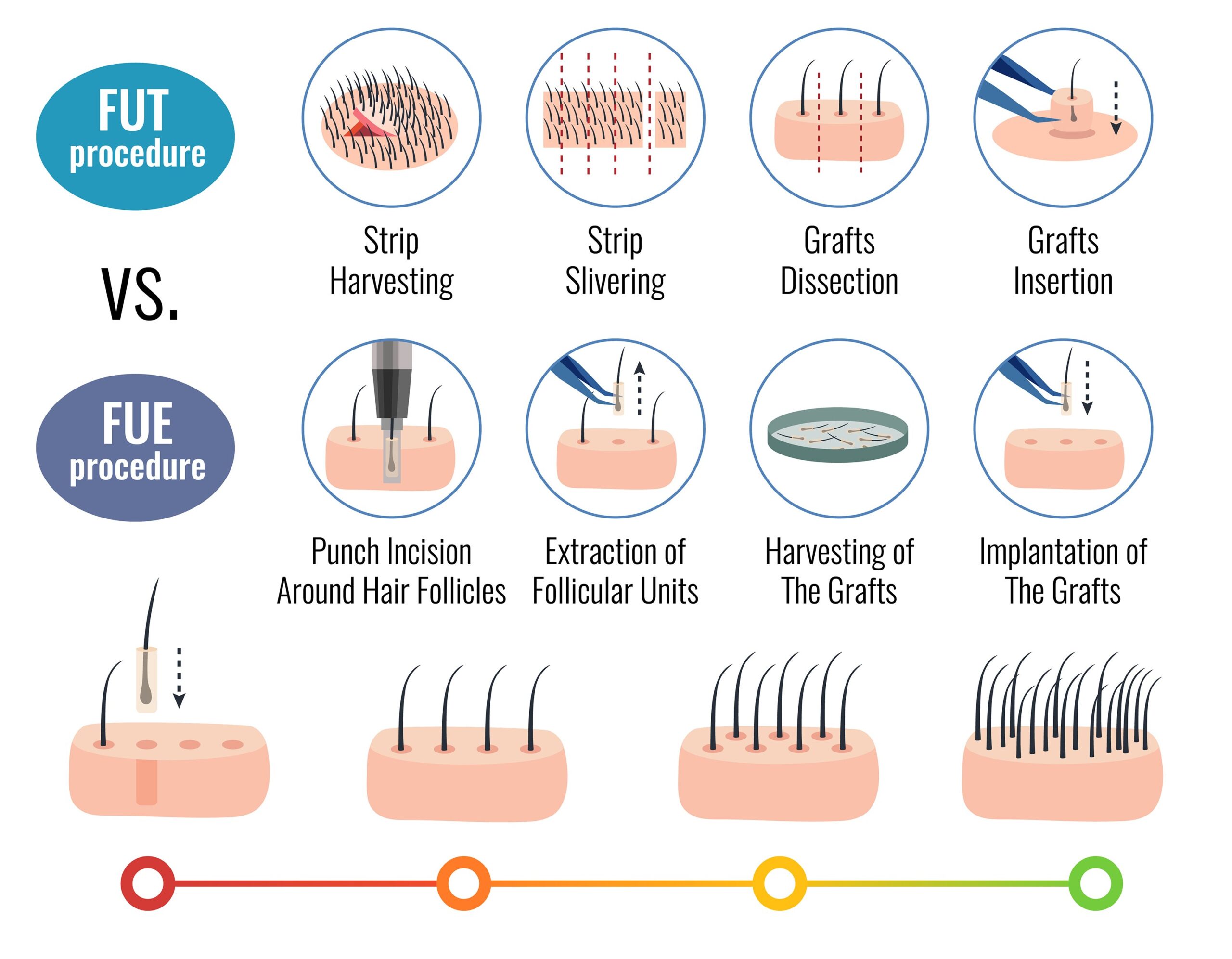Phone
+91 96667 22556
Mail us
info@facileclinics.com
Opening Hours
10 AM to 8 PM Every day
+91 96667 22556
info@facileclinics.com
10 AM to 8 PM Every day


Hair transplantation is a surgical procedure used to treat hair loss. It involves moving hair follicles from one part of the body (often referred to as the donor site) to a bald or balding area of the body (the recipient site). This procedure is commonly used to treat male pattern baldness, but it can also be used to restore hair in women and in cases of hair loss due to injury or scarring.


In this technique, a strip of skin containing hair follicles is surgically removed from the donor site, typically the back or sides of the scalp, where hair is more resistant to balding. The strip is then dissected into individual follicular units under a microscope before being transplanted into the recipient site.

FUE involves harvesting individual hair follicles directly from the donor site using a small punch tool. These follicles are then transplanted into the recipient site. FUE does not require the removal of a strip of skin, so it typically results in less scarring and a quicker recovery time compared to FUT.

Both FUT and FUE can produce natural-looking results when performed by a skilled and experienced surgeon. The success of the procedure depends on various factors, including the quality of the donor hair, the density of existing hair in the recipient area, and the skill of the surgeon.
After hair transplantation, it’s normal for the transplanted hair to fall out within a few weeks. However, new hair should start to grow from the transplanted follicles within a few months, and the final results can usually be seen within 6 to 12 months.
Hair transplantation is generally considered safe and effective, but like any surgical procedure, it carries some risks, including infection, scarring, and the possibility of unnatural-looking results. It’s essential to thoroughly research your options and consult with a qualified and experienced surgeon to determine if hair transplantation is the right choice for you.